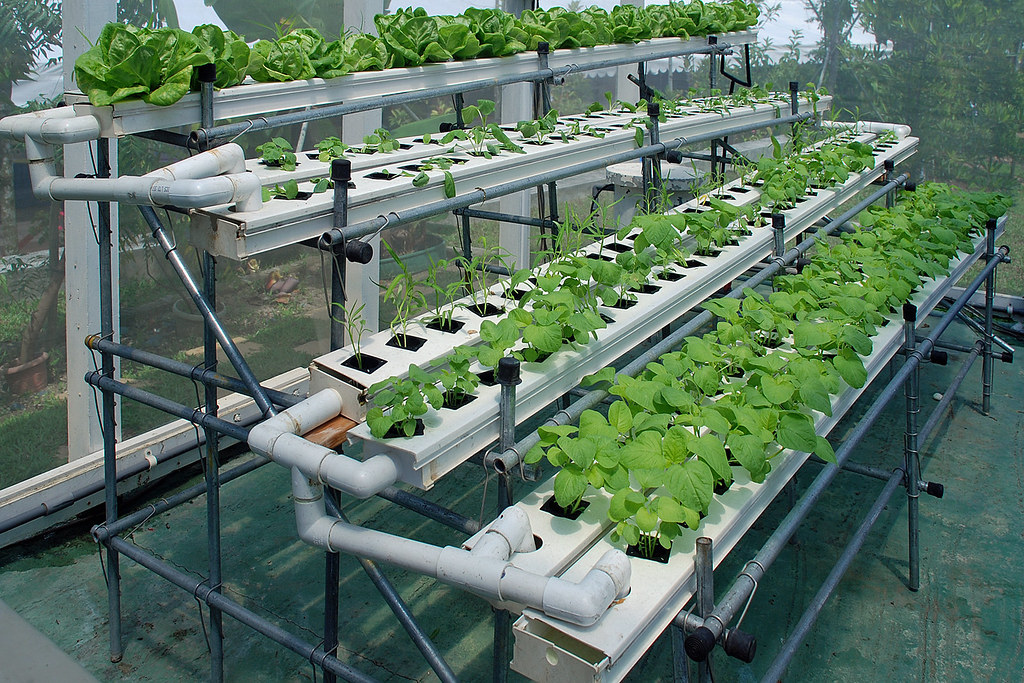Master the Art of Hydroponic Vegetable Gardening, A Comprehensive Guide

Master the Art of Hydroponic Vegetable Gardening: A Comprehensive Guide
Growing vegetables in a hydroponic system can be a game-changer for gardeners and food enthusiasts. Hydroponic systems offer numerous benefits, including increased yields, better control over nutrient levels, and reduced water waste. In this comprehensive guide, we will delve into the world of hydroponic vegetable gardening, exploring the essential techniques, nutrient solutions, and plant care required to grow a thriving garden.
Understanding Hydroponic Systems
Hydroponic systems are designed to grow plants without soil, using a nutrient-rich solution to deliver essential nutrients directly to the roots. This method allows for precise control over the growing environment, enabling gardeners to optimize conditions for optimal plant growth. Unlike traditional soil-based gardening, hydroponic systems eliminate the need for soil, reducing the risk of pests and diseases.
Choosing the Right Hydroponic System
When selecting a hydroponic system, consider the type of vegetables you plan to grow, the space available, and your budget. There are several types of hydroponic systems, including:
Deep Water Culture (DWC)
This system involves submerging the roots of the plants in a nutrient-rich solution.
Ebb and Flow
This system uses a timer to flood the roots with nutrient solution and then drain the excess.
Drip Irrigation
This system uses a network of tubes and drippers to deliver nutrient solution to the plants.
Setting Up Your Hydroponic System
Setting up a hydroponic system requires careful planning and attention to detail. Here are the essential steps:
Choose Your System
Select the type of hydroponic system that best suits your needs.
Prepare the Space
Ensure the area is clean, well-lit, and has a stable temperature.
Assemble the System
Follow the manufacturer’s instructions to assemble the system.
Add the Nutrient Solution
Mix the nutrient solution according to the manufacturer’s instructions.
Plant Your Seeds
Place the seeds in the system, ensuring they are spaced correctly.
Growing Techniques
Growing vegetables in a hydroponic system requires specific techniques to ensure optimal growth. Here are some essential tips:
Monitor pH Levels
Maintain the pH level of the nutrient solution between 5.5 and 6.5.
Adjust Nutrient Levels
Regularly check and adjust the nutrient levels to ensure the plants receive the right balance.
Prune and Train
Regularly prune and train the plants to encourage healthy growth and prevent overcrowding.
Nutrient Solutions
The nutrient solution is the backbone of a hydroponic system. There are several types of nutrient solutions available, including:
Commercial Nutrient Solutions
These are pre-mixed solutions designed for specific types of plants.
Homemade Nutrient Solutions
These can be made using a combination of nutrients, such as calcium nitrate and magnesium sulfate.
Plant Care
Proper plant care is crucial for growing healthy and productive plants in a hydroponic system. Here are some essential tips:
Monitor Plant Health
Regularly inspect the plants for signs of stress or disease.
Adjust Temperature
Maintain a stable temperature between 65°F and 75°F.
Provide Adequate Light
Ensure the plants receive sufficient light, either through natural sunlight or artificial lighting.
Troubleshooting Common Issues
Despite the benefits of hydroponic systems, they are not without their challenges. Here are some common issues and how to troubleshoot them:
Root Rot
This can occur if the roots are exposed to too much water. Check the pH level and adjust the nutrient solution accordingly.
Nutrient Deficiencies
This can occur if the plants are not receiving the right balance of nutrients. Check the nutrient levels and adjust as needed.
Pests and Diseases
This can occur if the system is not properly sanitized. Regularly clean and sanitize the system to prevent the spread of pests and diseases.
Conclusion
Growing vegetables in a hydroponic system requires careful planning, attention to detail, and a willingness to learn. By following the techniques outlined in this guide, you can successfully grow a thriving hydroponic garden. Remember to monitor pH levels, adjust nutrient levels, and provide adequate light and temperature to ensure optimal plant growth. For a detailed guide on how to grow vegetables hydroponically, you can visit this comprehensive resource.
FAQs
Q: What are the benefits of growing vegetables in a hydroponic system?
A: Hydroponic systems offer increased yields, better control over nutrient levels, and reduced water waste.
Q: How do I choose the right hydroponic system?
A: Consider the type of vegetables you plan to grow, the space available, and your budget.
Q: What is the best way to set up a hydroponic system?
A: Follow the manufacturer’s instructions to assemble the system, add the nutrient solution, and plant your seeds.
Q: How do I monitor the pH levels in my hydroponic system?
A: Use a pH meter to regularly check and adjust the pH level of the nutrient solution.
Q: What are some common issues I might face when growing vegetables in a hydroponic system?
A: Common issues include root rot, nutrient deficiencies, and pests and diseases. Regularly monitor and adjust the system to prevent these issues.
0 Response to " Master the Art of Hydroponic Vegetable Gardening, A Comprehensive Guide"
Post a Comment